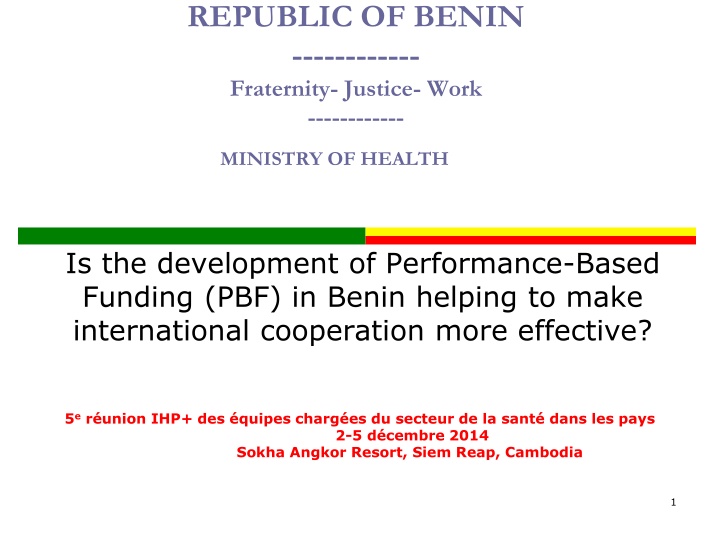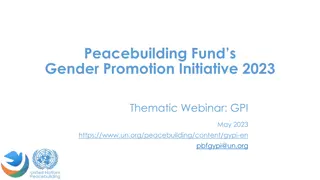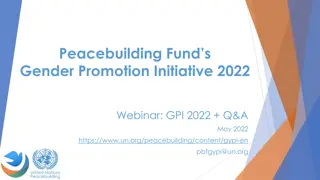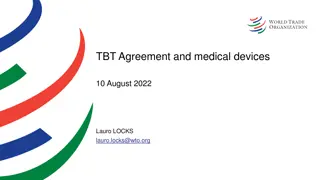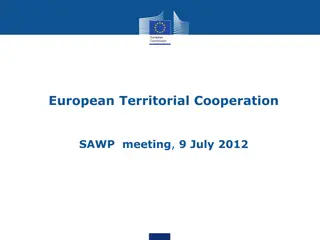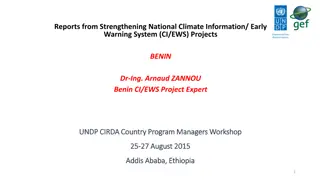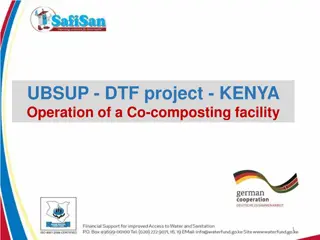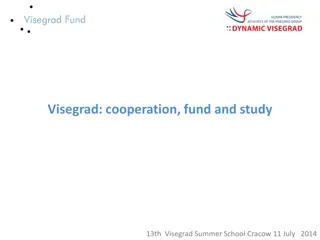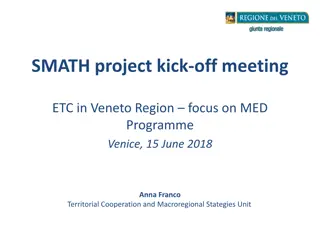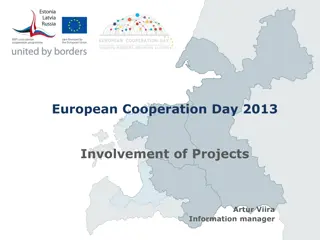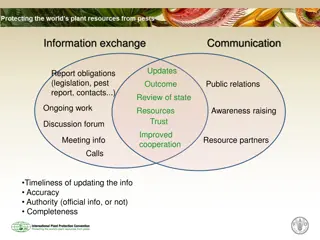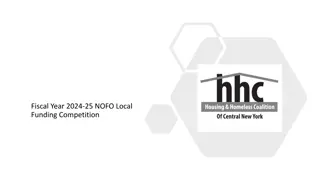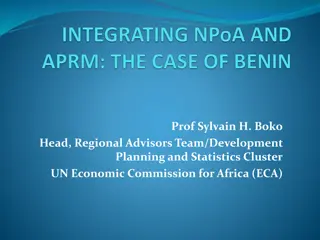Performance-Based Funding (PBF) in Benin: Enhancing International Cooperation
Development partners like the World Bank, Global Fund, and GAVI are implementing Performance-Based Funding (PBF) in Benin to improve healthcare delivery. This initiative aims to harmonize support, streamline reporting systems, and align indicators with national health plans. Challenges such as managing multiple verification systems are being addressed to enhance cooperation efficiency.
Download Presentation

Please find below an Image/Link to download the presentation.
The content on the website is provided AS IS for your information and personal use only. It may not be sold, licensed, or shared on other websites without obtaining consent from the author.If you encounter any issues during the download, it is possible that the publisher has removed the file from their server.
You are allowed to download the files provided on this website for personal or commercial use, subject to the condition that they are used lawfully. All files are the property of their respective owners.
The content on the website is provided AS IS for your information and personal use only. It may not be sold, licensed, or shared on other websites without obtaining consent from the author.
E N D
Presentation Transcript
REPUBLIC OF BENIN ------------ Fraternity- Justice- Work ------------ MINISTRY OF HEALTH Is the development of Performance-Based Funding (PBF) in Benin helping to make international cooperation more effective? 5e r union IHP+ des quipes charg es du secteur de la sant dans les pays 2-5 d cembre 2014 Sokha Angkor Resort, Siem Reap, Cambodia 1
Five key questions to be answered 1. Which development partners are granting or intend to grant PBF in Benin? 2. Do they use the same indicators and targets to measure performance and the same system of preparing reports? Are these indicators and targets drawn from your national health plan? 3. How did you get the World Bank, the Global Fund and GAVI to use the same PBF methods and indicators? 4. Is PBF helping to harmonise international support and make it more effective? 5. What barriers does PBF represent for effective cooperation? For example, if there are multiple verification systems, is managing them a burden? 2
1. Which development partners are granting or intend to grant PBF in Benin World Bank: USD 43.8 million of which USD 20.7 million for PBF (8 health areas out of 34) for 4 years Global Fund: 25,661 million Euros over three years, 19 health areas GAVI: USD 8,375 million of which USD 5,759 million for PBF for 5 years with 2 areas CTB: 20 million Euros over five years of which 2,410 million Euros for PBF for 5 health areas Scale-up: 1stquarter 2015 3
2. Do they use the same indicators and targets to measure performance and the same system of preparing reports? Are these indicators and targets drawn from your national health plan? Basic document for PBF: Framework of PBF in Benin, January 2014 version, setting out the rules governing PBF, notably the indicators/targets of the programme, the distribution of the PBF budget, the unit costs of services, the methods for calculating credits and allocation, verification and secondary verification procedure, role of stakeholders etc (www.beninfbr.org), is currently being used in 8 health areas (WB) and will be used in 21 health areas (GAVI and GF) by the end of the 1stquarter of 2015, funding available Harmonisation of indicators in progress with 5 health areas (CTB) for use of the same framework Indicators and targets drawn from the National Health Development Plan and based on MDGs 4,5 and 6 4
3. How did you get the World Bank, the Global Fund and GAVI to use the same PBF methods and indicators? COUNTRY COMPACT agreed in November 2010 and implementation of joint HSS Health System Strengthening platform between the Technical and Financial Partners (TFP) and the Government of Benin, the Global Fund, the Vaccine Alliance (GAVI), the Coop ration Technique Belge (CTB), facilitated by WHO The goal of the HSS platform is to implement the Country Compact: harmonisation of strategies implemented with a single management unit, one monitoring-evaluation mechanism with the support of the Technical and Financial Partners under the leadership of the Ministry of Health Implementation: agreement of stakeholders to continue with the PBF strategy with an adjustment of the system implemented according to the project negotiated by Benin with the World Bank (March 2010), having a component supporting a sector-based approach . 5
4.Is PBF helping to harmonise international support and make it more effective? First results obtained in the health areas supported by the World Bank with PBF Transition from a Project financed by a single TFP to a Health System platform/programme, with other technical and financial partners besides the World Bank, with WHO facilitation Country compact: opportunity to bolster the HSS platform to better document accountability Results: increase in funding, respect of principles of the Paris Declaration, support for the national PBF policy with a single system of planning, monitoring/evaluation Strengthening (HSS) and ensure mutual coordination and 6
5. What barriers does PBF represent for effective cooperation? For example, if there are multiple verification systems, is managing them a burden? Consensus centres/hospitals and community-based organisation applicable in 29 health harmonisation under way to integrate the 5 areas of the CTB Integration of community links into the system is facing resistance from the traditional TFPs in this area (change in approach regarding PBF on indicators to be bought) PBF in private sector under way but negotiation with traditional TFP in implementation in health areas out of 34, 7
